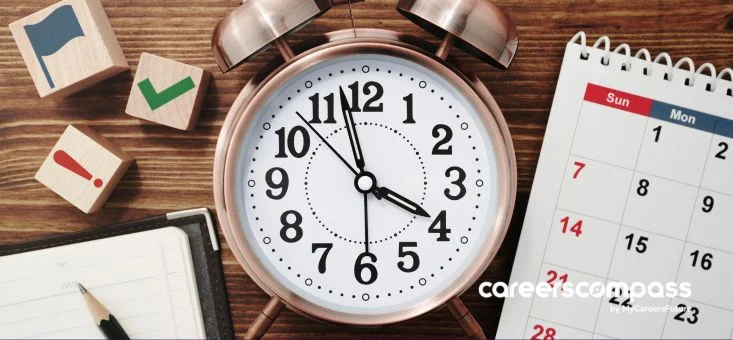It is time again to take stock of what we have accomplished in the year. As the year ends, take some time to reflect: have you made full use of your time to achieve what you set out to achieve?
The book “The 5 Kinds of Time” by Wang Xiao divides the concept of time into five distinct types and aims to teach us about time management. As we set out to make resolutions for the new year, this book guides us on how we can better maximise our limited resource — time.
A critical part of time management is understanding your goal in life
Understanding your life goal — what you want to achieve or see happen — is essential for time management. We need clarity on our goals before attaining them, whether about accomplishments at work, a better marriage and relationship with our children, or buying a new home or a car. Our goals will change in different stages of our lives, and so will our priorities in how we spend our time.
5 types of time and how to spend it
1. Survival time: spent on fulfilling your basic needs
In a literal sense, this refers to the time spent surviving and staying alive. Time spent eating and sleeping is the most fundamental category of survival time. To survive, people must protect the time spent on these activities, ensuring that they will always have enough time to engage in these critical activities.
These tasks should take up roughly one-third of your daily time, but that individual’s living choices ultimately determine the time required by each person.
2. Working time: spent on creating something of value
This second type of time is usually time spent on earning money. From an economic perspective, what you “earn” is not necessarily money. From a big-picture view, it just means the process of creating value.
You will experience mixed emotions during work, including doubts, anxiety, stress, and exhilaration. Humans begin to pursue their purpose in life throughout their working time. Extending beyond the basic survival need for food, water, rest and shelter, time at work refers to creating something of value and finding a purpose to live for.
3. Self-care time: spent taking care of your appearance and health
Physical appearance establishes the first impression when someone meets another person. From someone’s grooming and appearance, assumptions are drawn about a person’s experiences and upbringing.
Spending time on our appearance and health has numerous advantages. It is critical to help us fulfil one of our most basic needs — the desire to be loved. Once our biological and security needs are met, we develop a desire for positive social interactions. Everyone wishes to be healthy, lead the lifestyle they want, be liked and appear pleasant in their social circles.
4. Leisure time: spent enjoying yourself
Time spent on leisure activities can be anything that provides a change of pace from being bored and having nothing to do. A key feature of leisure time is the time that is purposefully separated from survival time, work, and time spent caring for your health.
Time spent on relaxation and leisure is a deliberate and planned decision, even if it may seem spontaneous. Therefore, there will always be a level of expectation for fun and enjoyment.
5. Reflection time: spent thinking about your feelings
Time spent on feelings refers to the time you devote to reflecting on your emotions. This is most difficult to grasp because what makes an emotional experience varies greatly depending on personal experiences. These could be moments of joy or times when our feelings were hurt. Spending time reflecting on this can lead us to a better understanding of what makes us happy or sad.
The same activity can fall under different types of time for different people
When planning your time, remember that the type of time a particular activity comes under depends on the individual’s lifestyle.
For example, signing up for a cooking class in French cuisine will fall under a different type of time for various people. It may be a housewife’s survival time. As part of her domestic chores, she prepares food to meets her family’s basic needs, making it necessary for her to improve her culinary skills. However, the class may be leisure time for a couple on vacation. They have no expectations or precise end goal in mind – this is simply something they want to try out and see how much they can learn from it. For a food blogger, this is their work – they need to produce new cooking videos weekly to remain competitive against other bloggers.
Once you figure out what kind of time each of your daily activities fall under, you can start to prioritise your tasks. To save time, you can even attempt “time-folding”, or doing activities that can satisfy multiple types of time. By seeking out these activities, we can gain satisfaction on various fronts.
Use your understanding of time to map your goals
Understanding the types of time and our goals allows us to allocate time and rank activities to determine how we want to spend our time. Having a goal-centric approach to time and mapping out the types of time throughout the day gives us better visibility of how we handle each kind of time to take incremental steps towards our goal.
There is no perfect formula or ideal model for allocating time, just as there is no single correct way to live. How would you spend your time?
This article is co-created by NexPage, a translated book summary app, and CareersCompass by MyCareersFuture.















